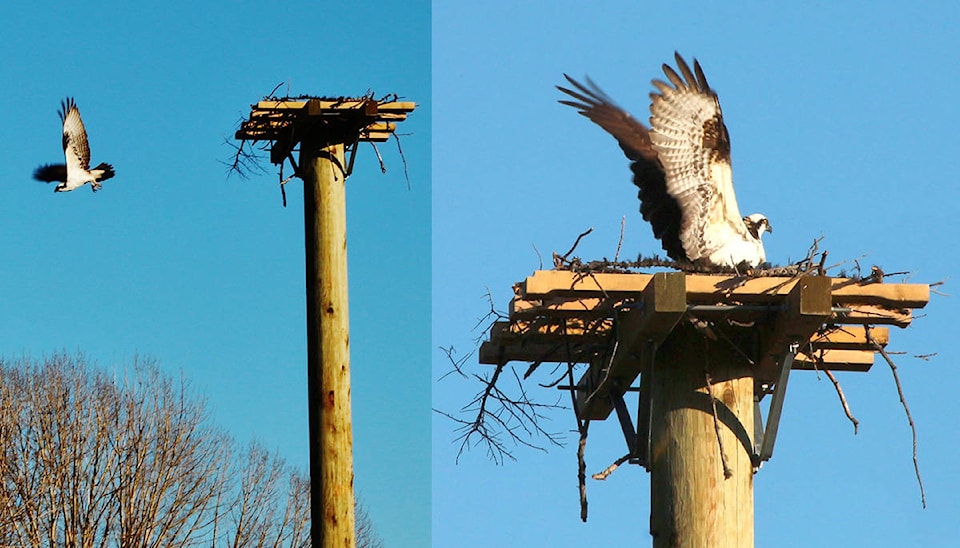Welcome to the neighborhood, Pandion haliaetus.
A pole set up in Idlewild Park for an osprey nest didn’t take long to attract occupants.
A pair of osprey have taken up residence and are in the process of building their new home overlooking the newly rehabilitated dam and lake at the Cranbrook park, as witnessed by Pat Hall, who provided the photos of the fish-eating bird of prey in the accompanying photos.
The pole and platform was erected last month by BC Hydro crews, and is one of a few projects the Columbia Outdoor School is coordinating as part of the rehabilitation of the area following the construction of a new dam.
The COS worked with BC Hydro to secure a pole that had been replaced and was slated for destruction, finding a place on the north side of the lake for use as a potential — now actual —osprey nest.
The project is part of a number of initiatives identified in a management plan for Joseph Creek that was presented to city council last summer, and was supported through funding from the National Wetland Conservation Fund from the federal government
According to Todd Hebert, Executive Director of the Columbia Outdoor School, here are more projects on the way, and a few that didn’t get finished last fall due to winter.
The osprey is a large raptor, reaching more than 60 cm (24 in) in length and 180 cm (71 in) across the wings. It is brown on the upperparts and predominantly greyish on the head and underparts. It’s diet consists almost exclusively of fish. Like owls, ospreys’ outer toe is reversible, so they can grab prey with two toes in front and two behind — useful when hunting fish.
The osprey is also the second most widely distributed raptor species, after the peregrine falcon.
Canadian ospreys generally spend their winters in South America.
